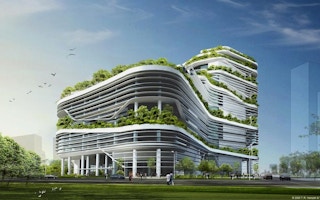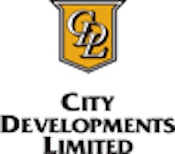The Singapore Green Building Council (SGBC) marked its fourth anniversary celebration on Thursday by launching a slew of green building initiatives set to address climate change.
Dr Vivian Balakrishnan, Singapore’s Minister for the Environment and Water Resources, announced the council’s three new partnerhships and two green certification schemes at Marina Bay Sands during the annual Singapore Green Building Week.
First on the list is a memorandum of understanding (MOU) between the SGBC, the Building and Construction Authority (BCA) and the California Lighting Technology Center (CLTC) at the University of California, Davis, which will see the establishment of a Lighting Technology Centre in Singapore within two years.
CLTC is a non-profit research and development (R&D) facility, under university’s Department of Design, which concentrates on energy-efficient lighting and daylighting technologies.
This American scientific institution will help Singapore promote and demonstrate the benefits of sustainable lighting solutions.
In addition, SGBC will partner with KNX South East Asia, a group of firms for the use of the international KNX home and building control standard, and TÜV SÜD PSB, a global technical service company.
“
Lighting is equivalent to 15 to 20 per cent of a building’s energy consumption. However, with sustainable lighting solutions, this can be reduced in half.
These two distinct agreements will enable more building and construction firms to get their products and services certified. More green options mean better choices for building developers and owners, said the council.
The other programmes are green services certification schemes: one for the Energy Performance Contracting (EPC) sector and another for Quantity Survey (QS) companies.
This supplements the first phase of the scheme that certified other sectors within the building industry, like architectural firms and environmental sustainability design (ESD) consultants, to enhance professionalism and create a full fledged sustainable built environment.
According to SGBC president, Mr Ng Eng Kiong: “The green building movement in Singapore is growing from strength to strength, and the challenge now is to ensure the industry remains engaged in the green building agenda so that we remain focused on delivering a truly green product at the end of the day, where building users will benefit from the better use of resources, improved efficiencies and a healthier environment.”
Reducing emissions from lighting
The MOU with the University of California, in particular, is geared towards energy efficiency in lighting. A sustainable alternative is a crucial step in boosting the country’s green building industry, said SGBC.
In Singapore, 31 per cent of the total electricity consumption comes from buildings and this increases to almost 50 per cent when all households in the island state are included, they explained.
Previously, Singapore zeroed in on energy efficient space cooling in the first and second Green Building Master Plans, since such chiller systems use about 60 per cent of a building’s energy consumption.
Lighting, on the other hand, is equivalent to 15 to 20 per cent of a building’s energy consumption. However, with sustainable lighting solutions, this can be reduced in half.
On a BCA trip to CLTC that SGBC joined late last year, they learned that daylight harvesting and LED lighting systems contributed to a significant energy use reduction, and greenhouse gas emissions reduction.
Daylight harvesting is the use of natural light instead of electrical or artifical lighting to illuminate indoor spaces, and LED lighting, which saves 40 to 60 per cent energy compared to incandescent and compact florescence lamps, is becoming more widespread in buildings.
Since the mission of CLTC is to have zero-net energy in buildings, the SGBC through this new partnership will create a similar centre that will promote this knowledge and other sustainable lighting advancements.
CLTC, SGBC and BCA will also conduct trainings and demonstrations of lighting technologies, share best practices and perform field tests and verifications to check energy savings and user acceptance of the improved lighting system.
Professor Michael Siminovitch of CLTC said this collaboration will lead to even more new ideas in the area of efficient lighting.
“Reducing our carbon footprint requires new thinking and bold ideas and the lighting center believes that this collaboration with Singapore will bring together different perspectives and ideas that are absolutely fundamental to helping bridge and overcome barriers to sustainable lighting design,” he added.
Expanding the range of green building products and services
Aside from lighting, having more green building products and services available in the market is the council’s way to raise the bar of the industry.
“
SGBC’s green services certification scheme will commit building consultants and practitioners to develop their in-house capabilities and competencies, adopt green corporate practices, and deliver sustainable designs and services
Ng Eng Kiong, SGBC president
KNX South East Asia promotes the use of control systems in homes and commercial buildings that lead to overall energy efficiency and savings, since intelligent control and monitoring components are used to run the air-conditiong, lighting, security systems and other electrical systems.
The two-year agreement with KNX South East Asia will deliver increased awareness on this and the organisations will also have joint training programmes, seminars and educational materials.
As for the partnership with TÜV SÜD PSB, the SGBC will delegate the testing and certification firm as their assessment arm. They will now be in-charge of checking and issuing of certificates for the council’s Singapore Green Building Product labelling scheme. The SGBC will concentrate on developing certification standards for green building products.
More certifications, better practices, better buildings
The first green services certification scheme in Singapore was launched last October, and it centred on building consultants that are keen on the green building agenda. This time around, similar schemes will be applied for energy performance contracting and quantity surveying consultants.
The latest schemes are advantageous for building owners and the industry in general, said the council. They will be able to identify easily which firms and consultants are the best ones to work with to have maximum energy efficiency and minimum costs.
SGBC explained that EPC firms help owners save on utility bills as these firms are responsible for the operating performance and payback for the installation of energy efficient projects, while QS companies assist in providing green design inputs to obtain cost benefits.
The council plans to have 80 per cent of practising EPC firms and 30 per cent of registered QS firms certified within the next year.
“SGBC’s green services certification scheme will commit building consultants and practitioners to develop their in-house capabilities and competencies, adopt green corporate practices, and deliver sustainable designs and services,” said SGBC’s Mr Ng.
Eco-Business.com’s special event coverage of the International Green Building Conference 2013 is brought to you by City Developments Limited (CDL).






















